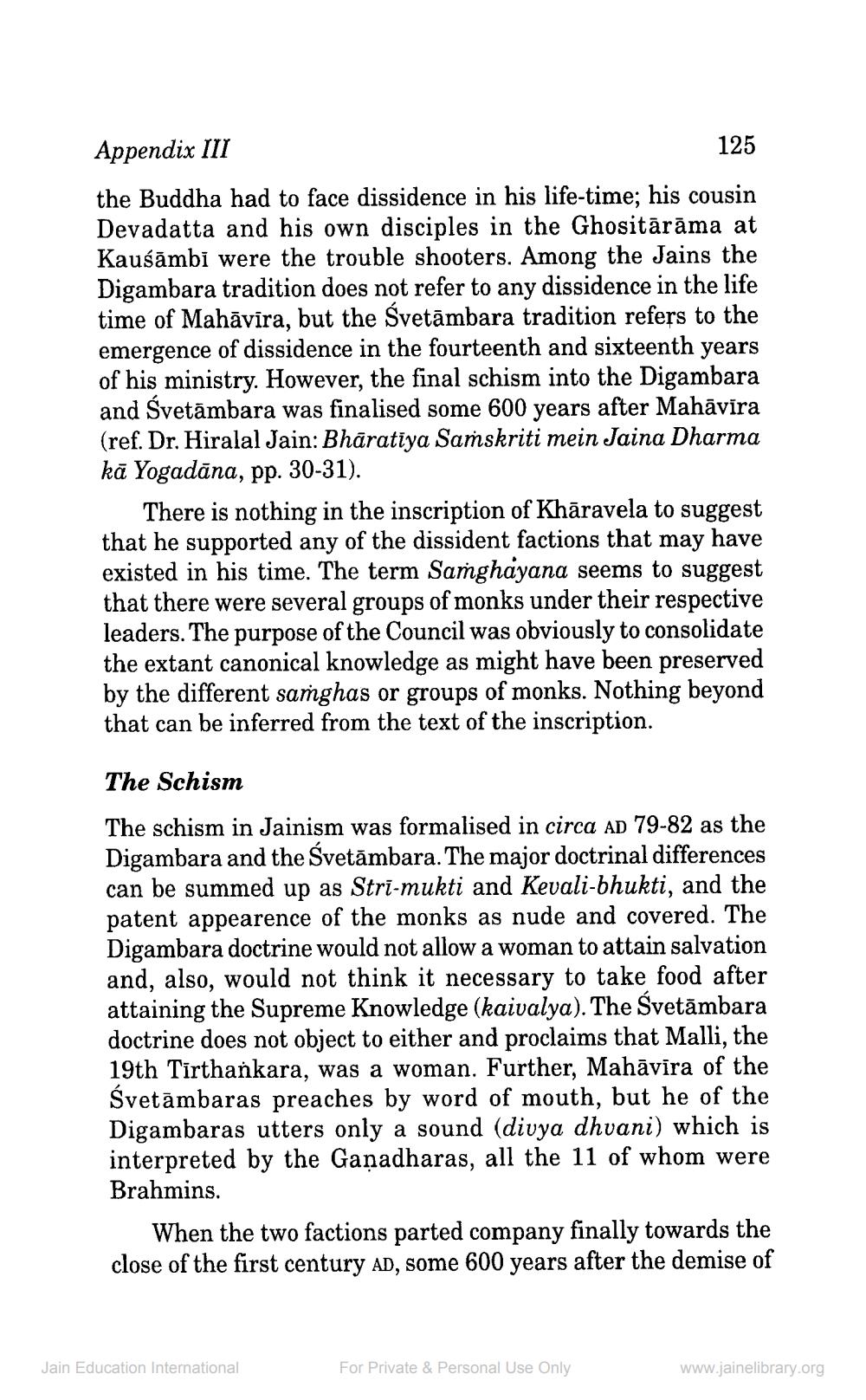________________
Appendix III
125
the Buddha had to face dissidence in his life-time; his cousin Devadatta and his own disciples in the Ghositārāma at Kausāmbi were the trouble shooters. Among the Jains the Digambara tradition does not refer to any dissidence in the life time of Mahāvīra, but the Svetāmbara tradition refers to the emergence of dissidence in the fourteenth and sixteenth years of his ministry. However, the final schism into the Digambara and Svetāmbara was finalised some 600 years after Mahāvira (ref. Dr. Hiralal Jain: Bhāratiya Samskriti mein Jaina Dharma kā Yogadāna, pp. 30-31).
There is nothing in the inscription of Khāravela to suggest that he supported any of the dissident factions that may have existed in his time. The term Saṁghayana seems to suggest that there were several groups of monks under their respective leaders. The purpose of the Council was obviously to consolidate the extant canonical knowledge as might have been preserved by the different samghas or groups of monks. Nothing beyond that can be inferred from the text of the inscription.
The Schism The schism in Jainism was formalised in circa AD 79-82 as the Digambara and the Svetāmbara. The major doctrinal differences can be summed up as Stri-mukti and Kevali-bhukti, and the patent appearence of the monks as nude and covered. The Digambara doctrine would not allow a woman to attain salvation and, also, would not think it necessary to take food after attaining the Supreme Knowledge (kaivalya). The Svetāmbara doctrine does not object to either and proclaims that Malli, the 19th Tīrthankara, was a woman. Further, Mahāvīra of the Svetāmbaras preaches by word of mouth, but he of the Digambaras utters only a sound (divya dhvani) which is interpreted by the Ganadharas, all the 11 of whom were Brahmins.
When the two factions parted company finally towards the close of the first century AD, some 600 years after the demise of
Jain Education International
For Private & Personal Use Only
www.jainelibrary.org




